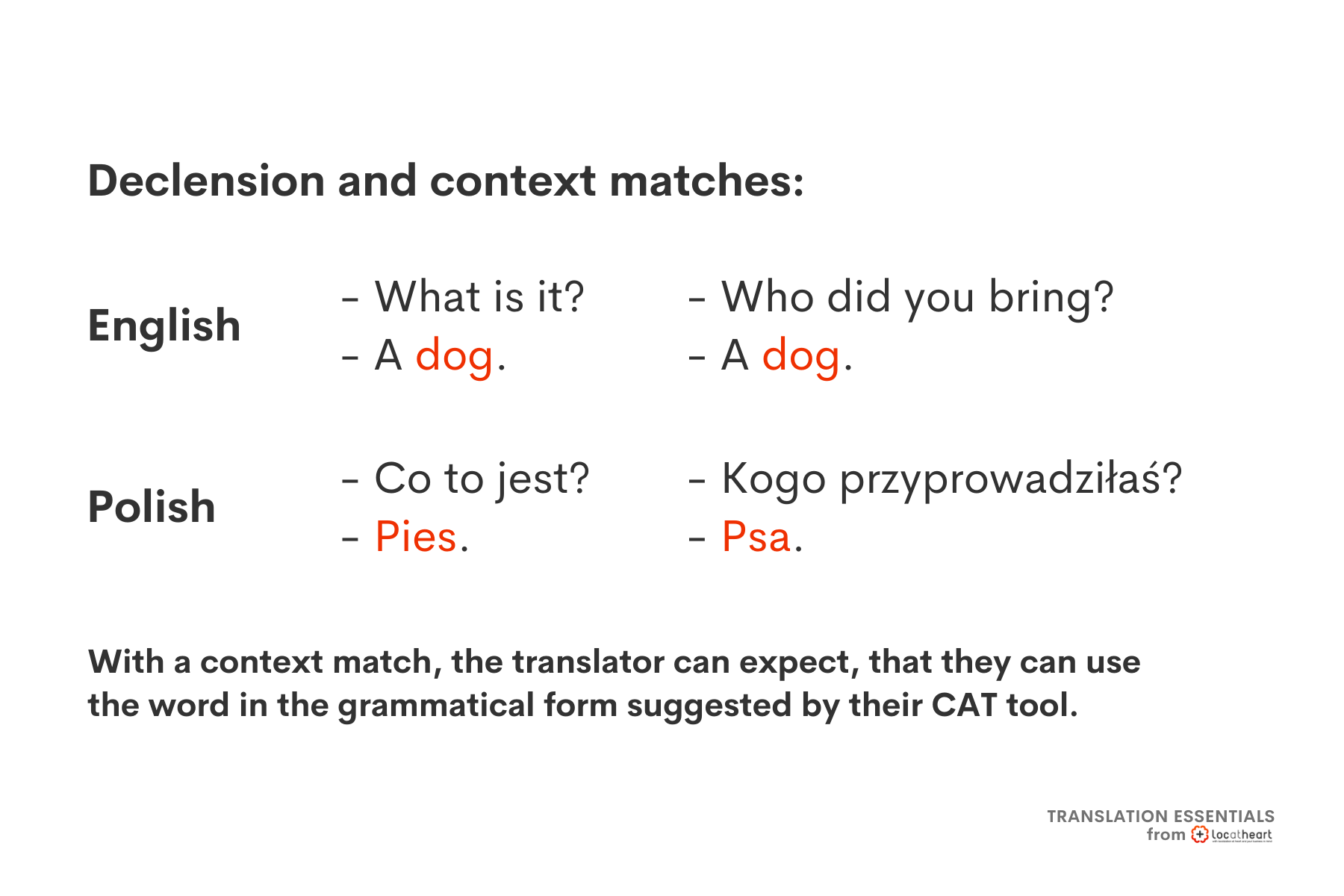TYPES OF REPETITIONS IN TRANSLATION
Repetitions happen when the software identifies identical or very similar segments previously translated for the same client. The level of similarity is expressed as a percentage and is known as a translation memory match.
A 0% match is no repetition at all.
A 100% match is a full repetition. It is called an exact match.
Matches ranging from 1 to 99% are called fuzzy matches.
- A 95-99% match is a nearly exact match.
- Lower matches may be divided into groups (e.g. 85-94% – high fuzzy match; 77-84% – medium fuzzy match; 50-74% – low fuzzy match) but the exact values may differ between software and providers.
- Matches below 50% are considered useless. They make translation neither better nor faster.
The percentage system was further used to express important information. What more can we hope for than an identical segment, an exact match of 100%?
Context!
Context in translation memory matches
As you know, computer-aided translation software (CAT) breaks texts into segments and suggests entries based on translation memory, glossaries and machine translation engines. What you don’t know yet is that it also shows context.
The context takes the form of the previous segment and the following segment. This helps translators keep track of the context.
A 101% match is called a context match. It is more valuable than an exact (100%) match because it is an identical segment in an identical context – which means it is followed and preceded by identical segments in the translation memory as in the current document.
Why is this important? Here is an example:
Look at these 3 English sentences:
- This is a dog.
- I have a dog.
- But not with a dog!
Now look at their Polish translations:
| English | This is a dog. | I have a dog. | But not with a dog! |
| Polish | To jest pies. | Mam psa. | Ale nie z psem! |
In Polish, like in many other popular languages, words change – and they change a lot.
Now imagine that you are translating a dialogue, where the answer is simply “A dog.” If you don’t know the context (in this case: the question), you’d be unable to translate it. You’d have to guess.
Similarly, if a 100% match says “A dog” was translated as “Pies”, you must be very careful about approving it in all instances. Here’s why:
 With a context match (101%), we can be confident that the match can be approved.
With a context match (101%), we can be confident that the match can be approved.
Note that repetitions are not limited to those found within a single text. They also include phrases or sentences from previous translations that are saved in the translation memory.
